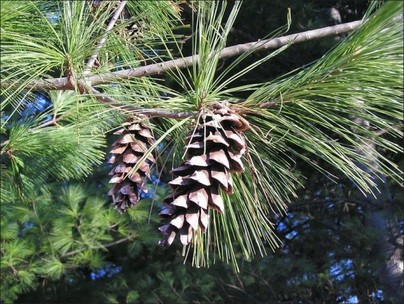The white pine is a large tree native to eastern North America. These trees are easily identified by their needles. It prefers well-drained soil and rocky highlands. Eastern white pine needles are high in vitamin C, 5 times more than a lemon, and make a great herbal tea.
It has soft, long, blue-green needles and big, brown, smooth cones that hold seeds. It provides food and shelter for numerous forest birds, such as the black-capped chickadee, and small mammals like squirrels. On average, the white pine can live up to 200 years and may reach 450 years of age.
It has soft, long, blue-green needles and big, brown, smooth cones that hold seeds. It provides food and shelter for numerous forest birds, such as the black-capped chickadee, and small mammals like squirrels. On average, the white pine can live up to 200 years and may reach 450 years of age.
Quick Fact
During colonialism, the white pine was reserved for the British Royal Navy, and was declared as the ‘Kingstrees’. This caused friction between the English and the colonials. In fact, all throughout the American Revolution, patriots would see how many kingstrees a single person could cut down and haul.
During colonialism, the white pine was reserved for the British Royal Navy, and was declared as the ‘Kingstrees’. This caused friction between the English and the colonials. In fact, all throughout the American Revolution, patriots would see how many kingstrees a single person could cut down and haul.
Location |
|
